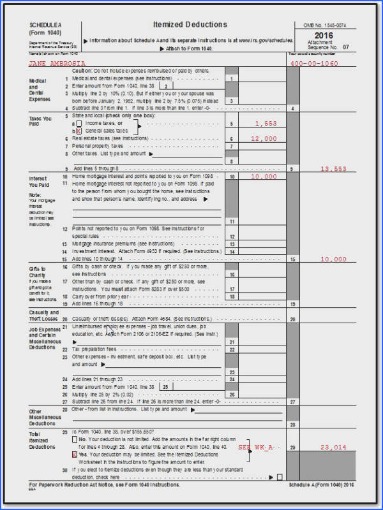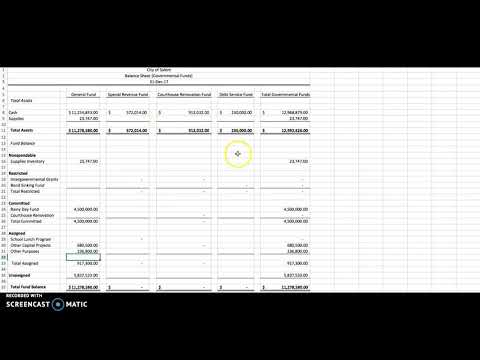Since every small business is unique, a PEO should be able to customize its HR features to fit your needs. Some PEOs specialize in certain industries or business sizes, which can be beneficial for companies that don’t want a standard one-size-fits-all PEO approach. The first step of any business purchase decision is to assess your business’s needs so you can find companies that can help you solve those problems. Once you compare your top choices’ pricing, features and contracts, you should be able to decide which one is best for your business. Here are some essential PEO services that businesses might consider when working with a PEO.
Many startup owners may believe that their company is too small to need or hire a PEO. While PEOs offer their services to businesses of any size, small businesses can perhaps benefit the most for many reasons. Romain Gouraud is a versatile writer specializing in business formation, legal structures, and entrepreneurial guidance. With a strong background in business development, Romain has authored numerous articles on topics such as LLC formation, S Corporations, and startup strategies. His work is featured on platforms like Boost Suite, where he provides clear and actionable advice to help entrepreneurs navigate the complexities of starting and managing businesses.
As with most PEO companies, pricing for CoAdvantage will be dependent on several factors, including the size of your business and what services your business needs. As a leading Professional Employer Organization (PEO) with a strong global presence, we offer seamless and efficient solutions for managing and compensating your international workforce. A PEO can make that much easier by allowing you to offer benefits employees want and identify top performers in the first place. A PEO can provide benefits that you simply will not have access to at a cost you can afford. Some will have plans that are a better fit than others since they all partner with different insurance providers. Make sure you take the time to walk through your options to ensure everyone gets the coverage they deserve.
- Omnipresent offers a PEO solution focused on helping businesses manage remote employees in multiple countries.
- Justworks handles payroll processing and benefits administration, while Paychex PEO is an excellent example of a PEO that does hiring and onboarding.
- We like that Papaya Global also conducts a compliance check before processing payroll.
- In addition to freeing up your time on payroll and benefits administration, PEOs are especially valuable for small businesses that want to access competitive yet affordable employee benefits.
- HRO services can handle many of the same HR functions as a PEO can, but they operate as separate entities instead of forming an employer partnership.
Employee Benefits
If you’re interested in enterprise-grade employee benefits without the enterprise-grade price tag, a dedicated benefits specialist will walk through the entire process with you. If you’re looking for a highly customizable and flexible PEO solution, ADP TotalSource is an excellent choice. It’s also one of the most well-known HR management companies globally, servicing more than 140+ countries worldwide. The software is a fully integrated human capital management platform that effectively replaces numerous tools you may already be using. As such, you can consolidate everything into one interface while saving money on long-term SaaS subscriptions for numerous tools you no longer need.
- Many PEO companies offer consultancy services in several areas, and you should ask about these when talking to a PEO.
- However, it goes above and beyond standard offerings by providing risk and compliance services.
- PEOs that offer training and development often have an online platform to track and report employee course results.
- Whether you’re looking to streamline HR operations or offer better employee benefits, finding the best PEO services for small businesses can make all the difference.
While PEO pricing varies by provider and company needs, industry research suggests small businesses pay around $40 to $150 per employee monthly or between $500 and $1,800 per employee annually. Outliers also exist, with premium service tiers over $200 per employee per month. No matter what stage or industry your company is in, the best PEO providers should offer features that directly support your small business growth. Virtually any type of business can use a PEO, but the ones that often find themselves needing a PEO are typically small- to mid-size businesses. It can be difficult to manage HR functions with limited HR knowledge or resources, so a PEO can be advantageous in keeping SMBs on track. The majority of PEOs charge on a per-employee basis, ranging between $40 and $160 per employee per month.
Professional Employer Organization (PEO) Frequently Asked Questions (FAQ)
PEO, HRO and ASO are all acronyms that refer to different services that businesses can use to outsource HR tasks. Which type of service is best for a particular business will depend on its needs and goals. PEOs can be a good choice for businesses that want a comprehensive solution that includes a wide range of HR-related services, as well as support and resources to help them manage their employees. Contacting the INFINITI HR support staff is facilitated by a guide to quick contacts for specific support needs. The list includes telephone numbers and email addresses for questions about billing, benefits, employee status changes and other matters.
With Paychex, you can access comprehensive payroll processing, integrations, compliance and risk management, benefits management, HR technology, and employee onboarding. Notably, it’s among the few on our list offering talent management through an applicant tracking system (ATS). ADP TotalSource offers all the services you are likely looking for in a PEO, including new-hire onboarding, employee retirement plans, work-life assistance programs and full-service payroll.
However, it can be challenging to get an apples-to-apples comparison for PEO pricing, as many HR vendors don’t list pricing online, or they offer different features and pricing models. For example, some PEOs offer plans with bundled HR services, while others offer customizable or tiered plans with add-on options. Although global employment laws apply to employees and contractors differently, Papaya has experience with both types of workers, so it can help mixed teams stay compliant. Since Papaya’s HR platform is system agnostic, you can integrate it with other tech platforms to send employee data best peo for small business seamlessly, reducing the potential for human errors. In addition to providing complete HR services and general support, TriNet gives you the option to connect with experts who have industry-specific knowledge. This isn’t something that many competitors offer, but it enables you to receive HR guidance that is tailored to your unique business and industry.
Cons: Loss of Control Over Certain HR Functions
The rating of this company or service is based on the author’s expert opinion and analysis of the product, and assessed and seconded by another subject matter expert on staff before publication. Small businesses dedicate about 17% of their working hours to administrative tasks. Outsourcing payroll, benefits administration, and other HR duties to a PEO can save precious time and money that could be better spent running and growing your business. Navigating business laws, regulations and other compliance issues requires expertise that many business owners, particularly new startup founders do not possess. Partnering with a PEO allows businesses to work with compliance experts who stay up-to-date on all of the changing employment and payroll laws and requirements to avoid any costly mishaps.
For instance, it only requires businesses to have one employee and there are no payroll minimums. Instead, it lets business owners pay a percentage of their payroll or per employee. Like most PEOs, it doesn’t require long term contracts but does state that business owners must give a 30 day written day notice prior to canceling. These amounts are also per employee and there are discount tiers for businesses that have more than 25, 100, or even 174 employees. In addition, business owners can also be eligible for a 15% discount if they choose to pay on an annual basis.
This mobile capability is ideal for employers looking to simplify benefits administration on the go. As part of our commitment to fairness and accuracy, each assessment is reviewed by a top business.com editor who was not involved in the analysis process. These costs can vary significantly depending on a number of factors, including the size of the business, the number of employees, the services being provided and the specific needs of the business. The PEO services provided by INFINITI HR are powered by the PrismHR system and INFINITI HR’s proprietary enterprise performance management (EPM) software.
What to look for in a PEO provider
He previously served as Entrepreneur.com’s managing editor and as the technology editor prior to that. You can set up permissions and workflow automations within the system, allowing you to not only streamline your HR functions, but also modify the solution as your HR needs change. You could write books on the nuances between PEO companies and which one might be best for you.
By partnering with one of these top PEO services, small businesses can confidently forge ahead, knowing they have a reliable and trusted ally by their side. PEOs may assist with talent acquisition and recruitment strategies, helping small businesses attract and retain top talent. Many larger people companies try to have convoluted price structures and aggressive sales reps, which frustrate prospects.
It is important to note that not all PEOs are CPEOs, and businesses should research carefully any PEO they are considering working with to ensure that it meets their needs and expectations. There are many PEOs to choose from, so it can be difficult to know which one is best for your business. To help you find the right solution for your needs and budget, here are the best PEO services available today. Contact your local BBSI representative today to learn how we can help you streamline operations, reduce risk, and take your business to the next level. The best PEO services will know that your growth is directly tied to their own, so they’ll be directly invested in helping you achieve your vision.
What is the best PEO service for small businesses?
For example, employees might become upset if they have to switch insurance providers based on PEO’s demands. Therefore, some progressive employers like to keep these options internal to prevent losing control. Some business owners successfully manage these processes by hiring competent HR administration professionals and by utilizing payroll/HR software. For instance, the right software platform like Gusto can automate processing payroll, paying employee taxes, and generating employee offer letters. Paychex is a professional employer organization with strong digital onboarding and employee self-service tools, making it ideal for businesses staffed with remote teams.
Frequently Asked Questions: PEO Services for Small Businesses FAQs
Are you in compliance with the new CARES act and do you know how to handle COVID-related issues? Maybe you’re unsure of how to handle an employee termination from a legal standpoint. One of the biggest benefits of partnering with a PEO company is access to HR professionals that can answer questions and help you navigate different situations as they arise. Some PEO companies only work with businesses in specific regions, while others work in all 50 states. From there, you can work with your provider to choose the best plan or services package that checks all your boxes.








